We welcome the new year with a bang as the Quadrantid Meteor Shower graces the
night skies from January 3 to January 7. According to PAGASA, during its peak on
January 4, 40 to 120 Quadrantids can be seen per hour in perfect conditions. It will start around 12 a.m. and ends in the early morning of January 5.
Unlike most meteor showers that originate from comets, Quadrantids are remnants
of an asteroid called 2003 EH 1. Quadrantids were first seen by French Astronomer
Jerome Lalande in 1825 in the constellation, “Quadrans Muralis”.
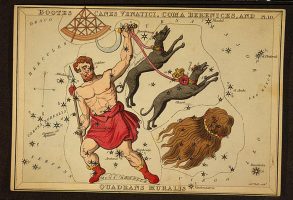
In 1992, after the International Astronomical Union published a list of recognized
modern constellations, Quadrans Muralis was left off the list. However, NASA
assured that this would not affect our viewing since the constellation is not the
source of the meteors.
Here’s how you can witness the Quadrantid Meteor Shower:
• Choose a secluded viewing spot away from city lights.
• Arrive early at the chosen viewing spot to give your eyes time to adjust to the
dark.
• Wear comfortable and weather-appropriate clothes.
• Be patient. Observing meteors may take a lot of time.
• Enjoy!
Each night is a chance to behold a divine masterpiece. Just look up and you can see the stars twinkling like gems on the endless black canvas of sky. In movies, lovers often stargaze, naming stars after each other. The idea of actually owning a star and naming it after someone is fascinating, but the question remains: is it possible in real life?
According to the International Astronomical Union, it is impossible to legally buy a star and name it after someone. So be wary of companies that claim to be official star –naming agencies. One of which is the International Star Registry, which used to offer helping clients name a star in honor of their loved ones. But in 1998, the company was issued a violation by the New York City Department of Consumer Affairs for “deceptive advertising.”
This is because the only way for stars to be named legitimately is through the International Astronomical Union (IAU), an association of professional astronomers, dedicated to professional research and education in astronomy. Stars are given names for one reason alone—for astronomers to locate these celestial bodies more easily. In fact, the IAU has dissociated entirely from advertising and commercial practices to strengthen its identity as an international scientific organization.
To name stars, they are first sorted according to their brightness. Proper names are given up to the third brightest stars. Because history reveals that much of the modern math and astronomy we use today originated in Arabia, some of the stars’ names are Arabic, such as Betelgeuse and Dubhe.
Another system that the IAU follows in naming stars was proposed by Johann Bayer of Bavaria. Bayer assigned letters from the Greek alphabet to the brightest stars of each constellation. Using his system, Polaris is called Alpha Ursae Minoris, while Dubhe is Alpha Ursae Majoris.
Meanwhile, faint stars were named through catalogs prepared by astronomers. Frequently used catalogs include the Bonner Durchmusterung, Smithsonian Astrophysical Observatory (SAO), The Yale Star and The Henry Draper published by the Harvard College Observatory. A specialized catalog called the Deep Objective Prism Survey of the Large Magellanic Cloud published by Warner and Swasey Observatory was used to name the Supernova of 1987 (Supernova 1987A), one of the major astronomical events of this century identified with the star named SK -69 202.
These are the only systems accepted and used by the International Astronomical Union.
But in the end, how stars are named doesn’t alter the beauty of the night sky. When darkness reigns, everyone on this planet gets to witness the breathtaking scenery that satisfies our inner astrophiles.
Sources: International Astronomical Union, UW Madison Astronomy
By Charie Abarca, Panahon TV Intern
Because of the increased awareness on astronomical events, such as meteor showers, eclipses and the photogenic super moon, more and more people are capturing these phenomena using their mobile phones and cameras. According to Astronomy Online, this particular hobby, also called astrophotography, seems to be the most popular topic in this branch of natural science.
Types of Astrophotography
There are different types of astrophotography. Some are relatively easy to do, especially for beginners with nothing more than a DSLR (Digital Single-Lens Reflex) camera and a tripod. Others are more advanced and require a lot more gear.
Night Sky Photography
This type of photography only needs a simple set-up involving your camera, tripod and a good view of the night sky. Yet, if done right, the results can be breathtaking.
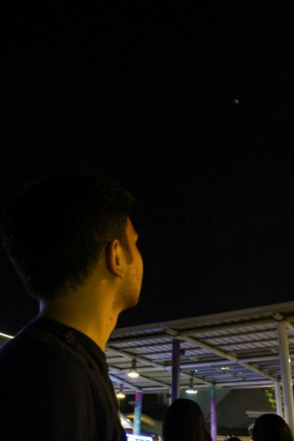
According to Photography Talk, night sky photography isn’t limited to photos of the stars; here, you can also capture constellations, star trails, the northern lights, and the Milky Way itself. Just how much detail you get in your photos depends on your camera.
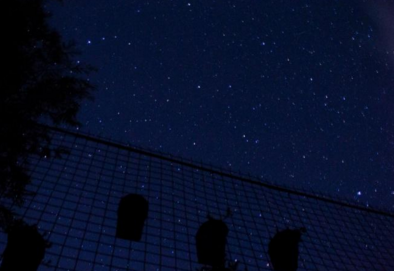
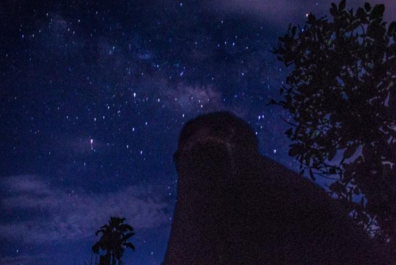
Piggyback Photography
To capture the night sky, one will need a telescope on which to mount the camera. According to Weasner, a website that discusses Astronomy-related topics, this set-up allows the telescope to track the movement of the night sky, compensating for the Earth’s rotation.
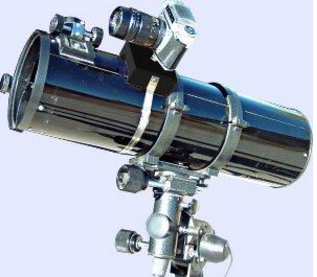
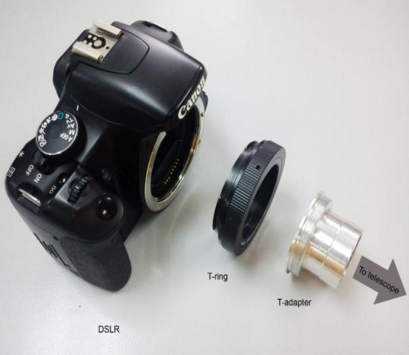
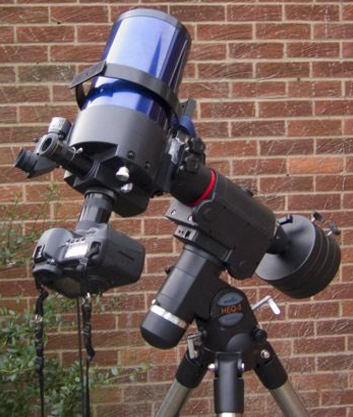
According to Astronomy for Beginners,Prime-Focus Photography gives a surprisingly small image, so it’s not ideal for capturing planets. But its advantage is that it can capture any celestial object in the night sky unseen by the naked eye.
Afocal Astrophotography
To do this, one needs to center the telescope’s eyepiece to the desired celestial object before holding the camera over the eyepiece. You can take a lot of photos of the object that is aligned or at the center of the eyepiece. The good news is you can use your mobile phone for this method as done in the photo below.
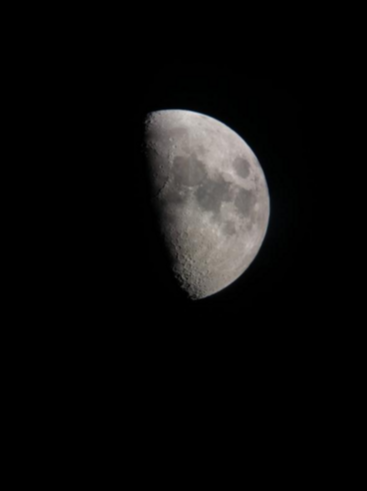
Eyepiece Projection Astrophotography
Like the Afocal Astrophotography, you will need to attach the camera to the telescope with the use of the T-ring and the camera-to-telescope adapter. But this time, the eyepiece will also be attached to the camera. According to Weasner, the eyepiece is inserted into the large tube of the adapter, which is then inserted into the eyepiece holder on the telescope. The camera is attached to the adapter using a T-Ring. The image from the eyepiece is “projected” onto the camera film or sensor. Objects tend to be fainter when imaged with this technique, due to the projection.
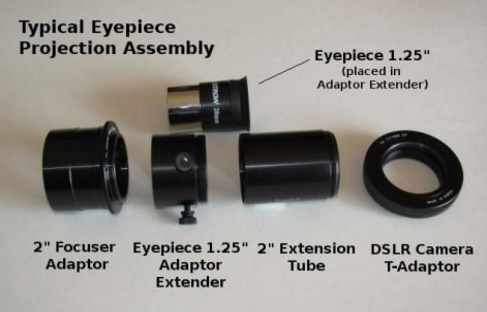
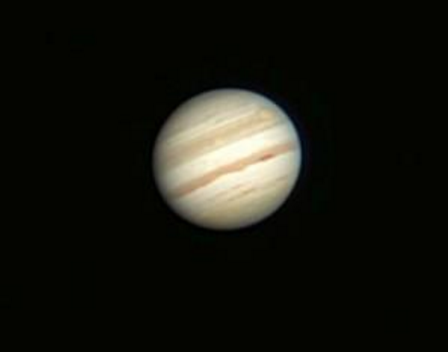
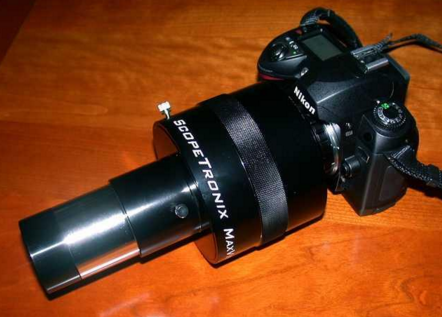
Taking photos in an urban area
Light pollution in urban areas makes astrophotography challenging. In a place like Manila, which is surrounded by tall buildings and city lights, the night sky is more likely to be obscured. Try to find a spot away from artificial lights and sky clutter to maximize your photo taking.
Dos and Don’ts of Astrophotography
- DO plan your location.
- DO bring flashlights so you can find your way around in a dark location.
- DO bring red cellophane for the flashlights. This allows your eyes to adjust to the night sky.
- DO observe and appreciate the beauty of the night sky.
- DO observe your surroundings to ensure your safety.
- DO bring company or a friend.
- DO bring a mat so you can lie down and relax while observing the night sky.
- DO bring snacks, but make sure you bring home your trash.
- DO fully charge your phone and bring powerbanks.
- DO bring an umbrella in case rain pours.
DON’TS
- DON’T use flash photography. This obscures the image you want to capture.
- DON’T fall asleep while waiting for the astronomical event.
- DON’T wear clothes that are not comfortable.
- DON’T talk too loud or make noises that will disturb the neighbors.
Taking photos of the night sky and other celestial objects requires patience and dedication. Observing the sky is fun, but it’s even more fulfilling if you capture the moment using the various methods of astrophotography.
BY Ronalyn Tindog, PanahonTV Intern
